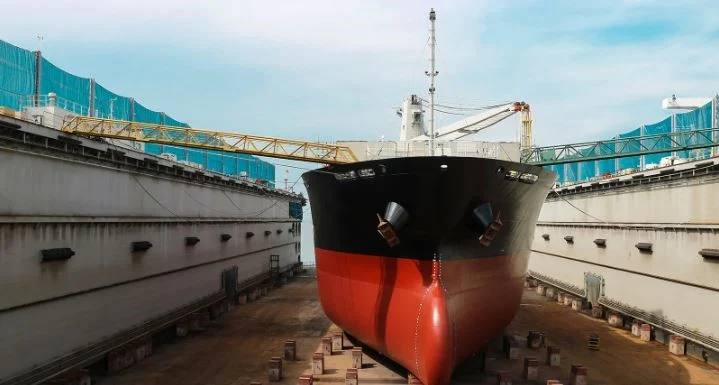It is all too easy to forget the wear and tear below the waterline when out at sea. Marine growth accumulates beneath the hull, equipment deteriorates, and corrosion gnaws away stealthily. This is why dry docking is a thing — not as a mere routine nicety but as a matter of course reboot for any boat that voyages in the ocean.
What a Dry Dock Actually Is
A dry dock is an on-land or platform-based structure within which a ship can be hoisted out of water entirely, enabling complete inspection, maintenance, or repair of its underwater portion. Rather than being moored alongside a berth or quay, the ship is slowly floated in, placed on keel blocks, and then water surrounding it is siphoned off.
This exposes the hull, propeller, rudder, sea chests, and through-hull fittings — areas normally hidden from sight.
The Two Faces of Dry Docks
There’s no one-size-fits-all dock. The two primary setups you’ll encounter are:
- Graving Docks
These are dug into the land — permanent structures with gates that can be opened to flood or pumped dry. Common in major shipyards.
- Floating Docks
A floating dry dock dives down to enable a ship to drive in, and then comes up with the vessel as water is drained. They are adaptable and usually used in small or isolated ports.
Why Dry Docking Isn’t Just Routine
Dry docking may seem like downtime for operations, but it’s far from idle:
Hull Performance Reset: Hull fouling and marine growth significantly decrease speed and increase fuel consumption. Dry docking permits hull cleaning, polishing, and recoating with antifouling paints.
Submerged System Checks: Propellers, shaft seals, sea valves, and rudders are examined, repaired, or replaced — work unachievable afloat.
Regulatory Compliance: Periodic dry docking — typically every 2.5 to 5 years — is required by most class societies and flag states for safety and seaworthiness purposes.
Damage Control: Following groundings or collisions, emergency repairs and structural inspections in dry docks are essential.
Subtle Details That Make All the Difference
Seasoned technical personnel give attention to details that are too often ignored:
Keel block positioning and hull stress computation may break or make the docking. Incorrect support leads to long-term deformation.
Paint thickness measurement (DFT) and anode wear rates are monitored with care — indicators of future corrosion tendencies.
Trim adjustments prior to entry are computed carefully; deviating by a few degrees complicates the entire docking process.
How Often Should a Ship Be Docked
Generally, ships are put in dry dock every 2.5 or 5 years depending on class requirements. But high-risk trades, age, or accidents such as grounding can require unscheduled docking. Tankers, bulkers, cruise liners — they all have different cycles depending on use and regulation.
More than Just a Maintenance Window
Dry docking isn’t solely for repairing what’s damaged — it’s about safeguarding the future of a ship. A clean hull, working valves, and fresh safety systems result in easier sailing, reduced fuel costs, and less surprises on the high seas.
Even the most well-cared-for vessel can only travel so far without coming to a halt every now and then. Dry dock is that halt — a brief pause which guarantees much longer mileage.


